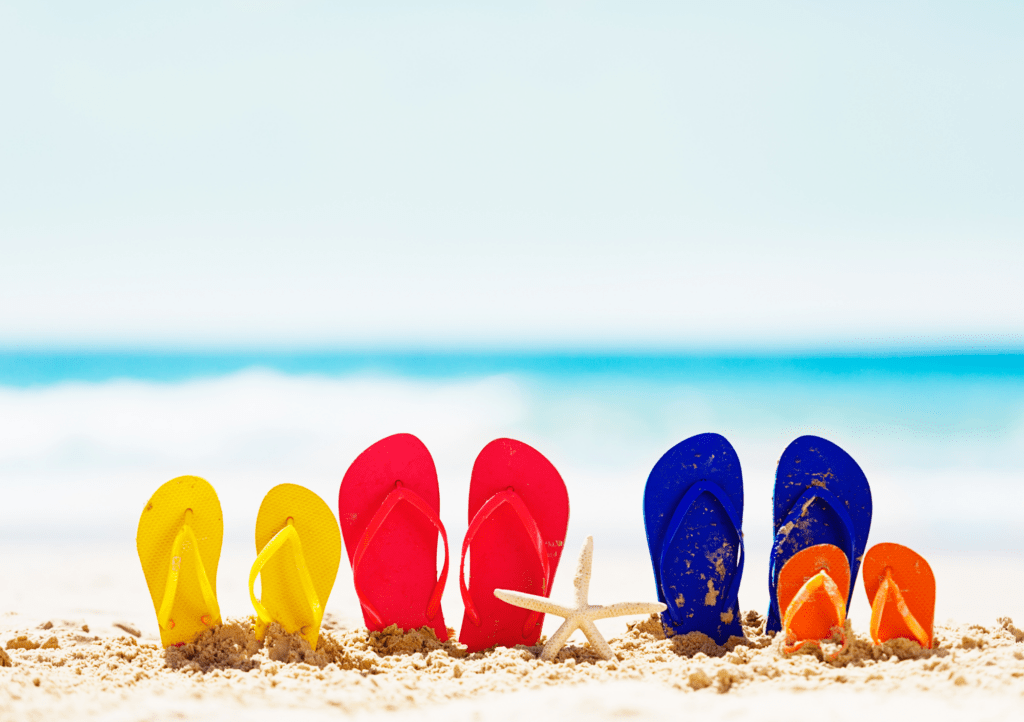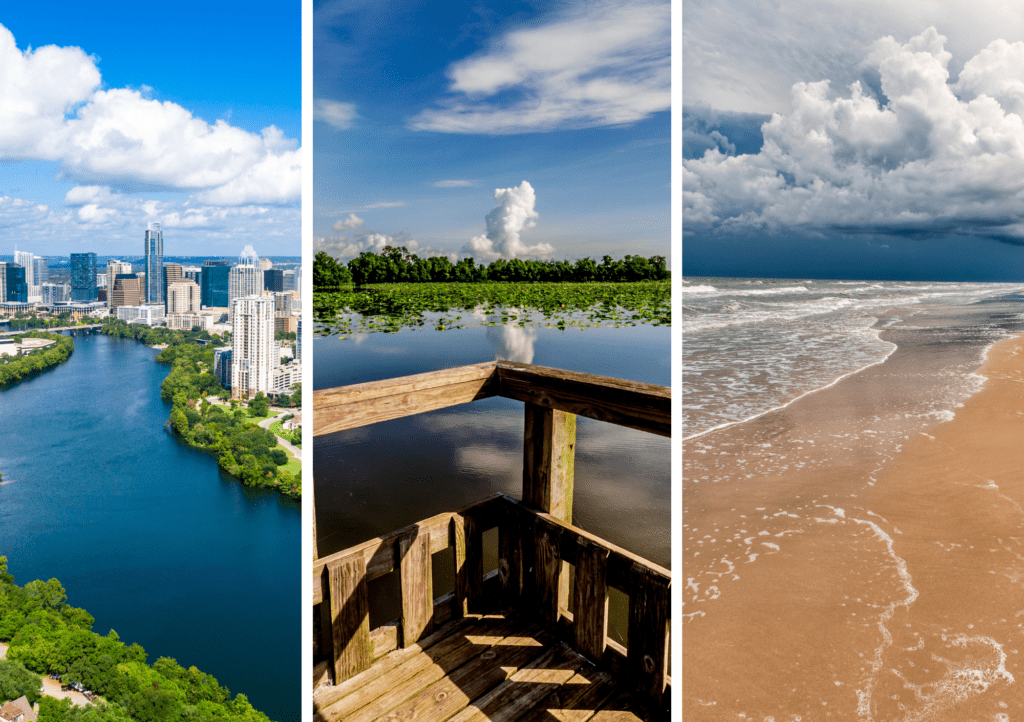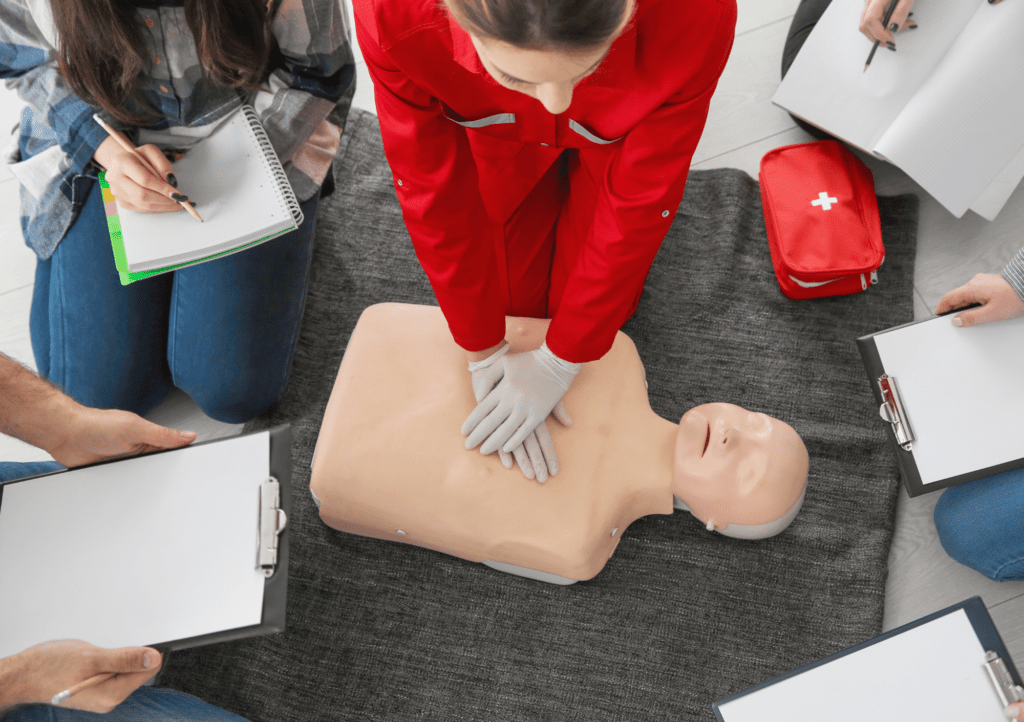Summer Water Safety Tips

As the summer months approach, many of us will enjoy time in the pool, visit the beach, or go rafting in one of the rivers. It is crucial to remember water safety for all ages, no matter the setting. Both children and adults can always learn more about water safety. Drowning is the leading cause of injury-related death in children ages 1-4 and the second leading cause for children ages 5-14. Every year, there are over 4,000 unintentional drowning deaths on average in the United States.
Pool Safety
Pool safety is important to keep in mind, whether you are at a public pool or a family pool in the yard. Young children should never have unsupervised access to a pool. Seventy percent of child drownings under 5 happen when children are in or at a pool without supervision. To prevent accidental access to family pools, the CDC recommends a four-sided isolation fence, which can reduce child drownings by around 50%.
Another key factor in preventing drowning is water competency, which involves being able to anticipate, avoid, and survive common drowning situations. Here are some important tips for pool safety:
- Supervise children at all times, even if there is a lifeguard. Drowning is often silent and can go unnoticed by a lifeguard.
- Ensure all family members take swim lessons to improve their skills and prevent drowning.
- Avoid distractions, such as cell phones, when supervising children in the pool.
- Only dive in designated areas to prevent head and neck injuries.
- Keep weak swimmers and young children within arm’s reach.
- Avoid consuming mind-altering substances while swimming or supervising others.
Natural Water Safety (Rivers, Lakes, and Oceans)
When enjoying natural water, whether it’s a river, lake, or ocean, there are more hazards to keep in mind to ensure everyone’s safety. The water competency principles that apply to pool safety are also relevant for natural water safety. However, each body of water presents its own unique risks. Adolescents (ages 15-19) have the second highest drowning fatality rate, with nearly three-quarters of those deaths occurring in natural water. While children and weaker swimmers are at high risk, adolescents have a significantly higher fatal drowning rate. Contributing factors include less supervision compared to younger children, overestimation of swimming skills, inaccurate assessment of dangerous situations, and alcohol consumption, which accounts for roughly 30%-40% of drowning deaths in natural water.
Rivers
River safety depends on the time of year and recent weather conditions. Seasonal changes can rapidly alter river conditions. Heavy rains, common in Texas, can cause rivers to swell and currents to become stronger, even in shallow water. It is important to dress appropriately for river trips; closed-toe water shoes and a life vest can prevent injury or accidental death from slipping and falling. If you fall into a river with strong currents, do not attempt to stand up as this can push you underwater. Many drownings in rivers occur when legs get snagged on branches or rocks, causing a person to get stuck. Additionally, there is the risk of hypothermia, even in warm weather, as cold water can cause a loss of strength and energy, increasing the risk of drowning. Moreover, be cautious of wildlife such as water moccasins, snapping turtles, and alligators, which can pose significant risks in certain areas. Be cautious of wildlife such as water moccasins and snapping turtles, which can pose significant risks in certain areas.
- Wear appropriate gear: Closed-toe water shoes and a life vest can prevent injury or accidental death from slipping and falling.
- Avoid standing up in strong currents: If you fall into a river with strong currents, do not attempt to stand up, as this can push you underwater. Instead, float on your back with your feet pointing downstream.
- Be aware of underwater hazards: Many drownings in rivers occur when legs get snagged on branches or rocks, causing a person to get stuck.
- Watch out for hypothermia: Even in warm weather, river water can be cold enough to cause hypothermia, leading to a loss of strength and energy, which increases the risk of drowning.
- Be cautious of wildlife: Water moccasins and snapping turtles can be dangerous. Stay alert and avoid areas where these animals are commonly found.
Lakes
Lake safety is similar to river safety in many ways. Monitoring weather and water conditions before and during your trip is crucial. It is important to keep underwater currents in mind, even if the surface of the water looks calm and smooth, as there is the risk of strong currents that can pull a swimmer under or out into deeper water. When swimming in lakes, always carefully choose the location and focus on swimming during low water conditions. Ensure that you swim with a buddy and that children are closely supervised without distractions. This includes avoiding alcohol consumption, reading, or cellphone usage. Use life jackets instead of inflatable toys, water wings, or foam noodles, which are not designed to prevent drowning. When using watercraft in lakes, be sure to watch for navigational hazards, avoid diving from the side of the craft, and have an assigned spotter to prevent drowning or injury. You’ll also want to be aware of potential wildlife hazards like alligators.
- Choose swimming areas carefully: Focus on swimming during low water conditions and always swim with a buddy.
- Supervise children closely: Ensure children are closely supervised without distractions, such as alcohol consumption, reading, or cellphone usage.
- Use proper safety equipment: Use life jackets instead of inflatable toys, water wings, or foam noodles, which are not designed to prevent drowning.\
- Be aware of navigational hazards: When using watercraft in lakes, watch for navigational hazards, avoid diving from the side of the craft, and have an assigned spotter to prevent drowning or injury.
- Be cautious of wildlife: Alligators can pose significant risks. Stay alert and avoid areas where these animals are commonly found.
Oceans
As many of us venture to Galveston or South Padre to enjoy the beaches this summer, ocean safety is essential. It is important to be aware of weather and wave conditions when visiting the beach and keep an eye on the warning flag system to understand if it is safe to swim. Bring sun protection and water, as heatstroke or dehydration can cause dizziness, making swimming dangerous. When attending the beach with children, be sure that they stay in shallow water and are near an adult at all times for proper supervision. Keep in mind the many hazards at beaches for the safety of yourself and others.
- Check weather and wave conditions: Always be aware of the weather and wave conditions when visiting the beach, and keep an eye on the warning flag system to understand if it is safe to swim.
- Stay hydrated and use sun protection: Bring sun protection and water, as sunstroke or dehydration can cause dizziness, making swimming dangerous.
- Supervise children properly: Ensure that children stay in shallow water and are near an adult at all times for proper supervision.
- Be aware of rip currents: Rip currents account for roughly 80% of rescues by beach lifeguards. If caught in a rip current, swim parallel to the shore until free.
- Know the tides: Be aware of rising tides to avoid getting trapped in deep water or on a sandbar.
- Avoid consuming mind-altering substances: Do not consume alcohol or other mind-altering substances when swimming or supervising others.
- Stay in lifeguard-supervised areas: Always swim in areas where there are beach lifeguards in case of an emergency.
By being aware of these risks and following these safety tips, we can enjoy our time in natural water settings while minimizing the risk of drowning and other water-related injuries.
Individual Safety and Skills
Learning the necessary skills to be safe in all types of water is essential, especially during the summer months. Being water-conscious not only for yourself but also for others, regardless of the setting, is indispensable. Here are some essential tips to strengthen individual safety and skills:
- Learn CPR: Learning CPR is an invaluable skill to have should you find yourself needing to take action until help arrives in the event of accidental drowning. Immediate resuscitation at the submersion site can significantly improve outcomes.
- Know Your Limits: Recognize when you are capable of attempting a water rescue and when you need to call for help. Don’t attempt to rescue a drowning person unless you are confident in your skills. Attempting a rescue without proper training can result in both you and the person in trouble drowning.
- Understand Water Safety: Be sure that you and your family understand water safety for both pools and natural bodies of water. Make sure everyone knows how to swim properly. Swim lessons and water competency training are vital components of water safety.
- Avoid Mind-Altering Substances: Refrain from using alcohol or other mind-altering substances when swimming or supervising others in the water. These substances impair judgment and coordination, increasing the risk of accidents.
- Supervise Children and Weak Swimmers: Keep children and weak swimmers within arm’s reach, regardless of the setting. Avoid distractions, as drowning is often silent and can happen quickly.
- Recognize Drowning Signs: Be sure that you and your loved ones know what drowning looks like and understand what to do if someone is drowning. Quick and effective action can save lives.
By taking these steps and maintaining water awareness, we can safely enjoy the water and cool off from the Texas heat this summer. Following these guidelines helps prevent accidental injury or death, ensuring a fun and safe experience for everyone.



